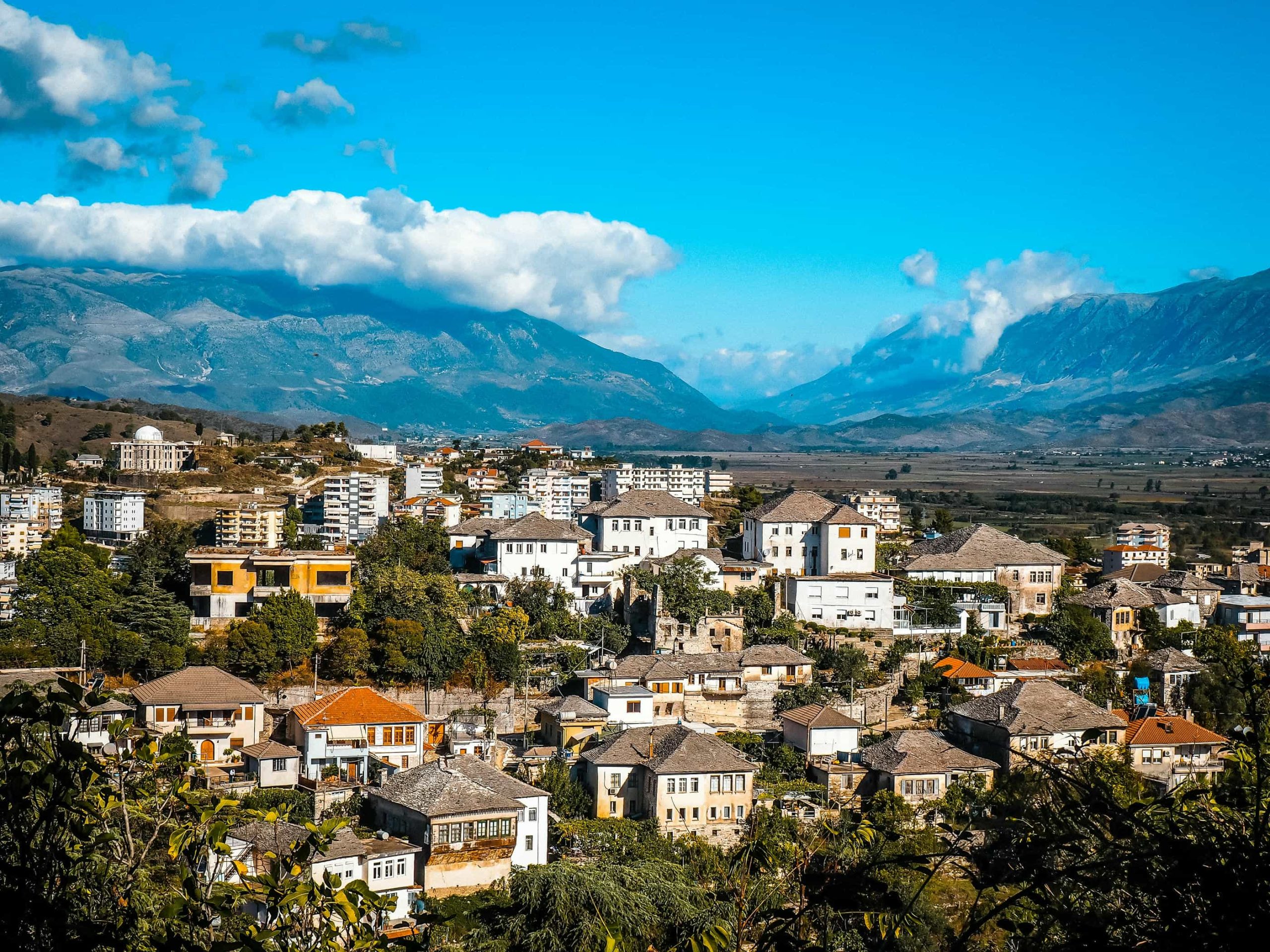Investing in Albania: Unconventional Opportunities Guide
Important Investment Disclaimer
This guide provides educational information only and should not be considered personalized investment advice. All investments carry inherent risks, and Albania’s emerging market status presents additional volatility considerations. Consult with qualified financial advisors and conduct thorough due diligence before making any investment decisions.
Albania’s investment landscape has been—how do I put this delicately—largely overlooked by international investors. Having spent considerable time analyzing emerging European markets, I’ve consistently found that Albania presents some of the most intriguing opportunities that mainstream financial media simply doesn’t discuss. The country’s strategic position, EU candidacy status, and rapidly evolving economy create unique investment possibilities that go far beyond traditional sectors.
What really strikes me about Albania is its transformation over the past decade. Back in 2014, when I first started researching Balkan markets, Albania felt like a completely different investment proposition. The infrastructure was lacking, regulatory frameworks were unclear, and political stability seemed questionable. Fast forward to today? The landscape has shifted dramatically.
Let me be completely honest—Albania isn’t for everyone. If you’re looking for the safety of developed markets or the explosive growth potential of Asia, you might want to look elsewhere. But if you’re seeking undervalued opportunities with genuine long-term potential, Albania deserves serious consideration.
Albania’s Investment Landscape: Beyond the Obvious
The Albanian economy has grown at an average rate of 3.8% annually over the past five years1, significantly outpacing many EU nations. What’s particularly interesting—and this is where most investors miss the point—is that this growth has been driven by domestic consumption and infrastructure development rather than external investment alone.
Here’s what gets me excited about Albania’s current position: the country is experiencing what economists call a “demographic dividend.” With over 60% of the population under 35 years old2, Albania has one of Europe’s youngest populations. This demographic structure creates enormous potential for domestic market growth, something that’s often overlooked when investors focus solely on export-oriented opportunities.
Albania Investment Snapshot
Population: 2.8 million (highly educated, multilingual workforce)
GDP Growth: 3.8% average (2019-2023)
Foreign Direct Investment: €1.3 billion (2023)
Strategic Location: Gateway between Europe and Asia
EU Status: Official candidate since 2014, negotiations ongoing
The interesting thing about Albania’s economy is its diversity. Unlike many small European nations that rely heavily on single industries, Albania has managed to develop multiple economic pillars. Tourism contributes roughly 21% of GDP3, while agriculture, manufacturing, and services each represent significant portions of economic activity.
From my perspective, this economic diversification creates multiple investment entry points. You’re not betting on a single sector’s success—you’re investing in a broader economic transformation. That said, this diversity also means you need to understand multiple market dynamics, which brings us to regulatory considerations.
Regulatory Environment: Navigating the Framework
Albania’s regulatory landscape has undergone significant improvements, though—let me be frank—it’s still evolving. The Albanian Investment Development Agency (AIDA) has streamlined foreign investment procedures considerably since 20184. What used to take months now typically requires weeks, assuming you have proper documentation and legal representation.
One aspect I find particularly compelling is Albania’s approach to foreign investment incentives. The government offers substantial tax breaks for investments exceeding €2 million, including potential corporate tax exemptions for up to 10 years5. However—and this is crucial—these incentives are sector-specific and require careful navigation of bureaucratic processes.
The banking sector has stabilized significantly, with major European banks establishing strong presences. Raiffeisen Bank, Intesa Sanpaolo, and Alpha Bank now dominate the market6, providing reliable financial infrastructure for foreign investors. This banking stability was absolutely crucial for my confidence in Albanian markets—you need dependable financial partners for any serious investment strategy.
Traditional Investment Sectors: The Foundation
Before diving into unconventional opportunities, let’s examine Albania’s established investment sectors. Understanding these traditional areas provides context for more innovative approaches.
Tourism Infrastructure Development
Albania’s tourism sector has experienced explosive growth, with visitor numbers increasing by 180% between 2015 and 20197. The Albanian Riviera, in particular, has become a legitimate competitor to Croatian and Greek coastal destinations. What strikes me most is how underdeveloped the infrastructure remains relative to demand.
Here’s where traditional investment opportunities become interesting: boutique hotels, restaurant chains, and transport services still offer significant returns. A colleague recently pointed out that occupancy rates in quality Albanian hotels consistently exceed 85% during peak season8, yet room supply remains limited.
Real Estate and Construction
Property values in Tirana have increased by approximately 15% annually over the past three years9. While this growth is impressive, I’m more interested in secondary cities like Vlorë, Shkodër, and Gjirokastër, where property values remain significantly undervalued relative to their tourism potential.
| City | Average Property Price (€/m²) | 5-Year Growth Rate | Tourism Potential |
|---|---|---|---|
| Tirana | €1,200-1,800 | 15% annually | Business/Cultural |
| Vlorë | €800-1,200 | 12% annually | Coastal/Maritime |
| Shkodër | €600-900 | 8% annually | Mountain/Adventure |
| Gjirokastër | €500-800 | 10% annually | UNESCO/Heritage |
Energy Sector Opportunities
Albania generates nearly 100% of its electricity from renewable sources, primarily hydroelectric power10. This creates unique opportunities for energy-intensive industries and data centers. The government has actively sought foreign investment in solar and wind projects, offering long-term power purchase agreements at competitive rates.
What really excites me about Albania’s energy sector is its export potential. The country already exports electricity to neighboring countries, and expanding renewable capacity could position Albania as a regional energy hub. The Trans Adriatic Pipeline project has also enhanced Albania’s strategic energy importance11.

Unconventional Investment Ideas: The Hidden Gems
Now we’re getting to the interesting stuff—the investment opportunities that most people simply don’t discuss. These are the ideas that have caught my attention after years of analyzing emerging markets, and honestly, some of them might sound bonkers at first glance.
Digital Nomad Infrastructure Development
Albania has quietly become one of Europe’s most attractive digital nomad destinations. The cost of living is roughly 60% lower than Western Europe, the internet infrastructure is surprisingly robust, and the weather is fantastic12. Yet there’s virtually no purpose-built infrastructure for remote workers.
I’m talking about co-working spaces, serviced apartments designed for monthly stays, and integrated living-working communities. The opportunity here is massive—Albania issued over 15,000 tourist visas to digital professionals in 202313, but the infrastructure to support long-term remote work is practically nonexistent.
Digital Nomad Market Potential
Conservative estimates suggest Albania could attract 50,000+ digital nomads annually by 2027, representing a €200 million market opportunity in accommodation, services, and lifestyle businesses.
Sustainable Aquaculture Ventures
Here’s something that absolutely nobody talks about: Albania’s aquaculture potential. The country has over 250 kilometers of coastline, numerous freshwater lakes, and ideal conditions for fish farming14. Current production is minimal, but demand for sustainable protein sources is exploding across Europe.
What makes this particularly interesting is Albania’s potential to become a sustainable seafood supplier to EU markets. With proper investment in modern aquaculture facilities, Albania could compete directly with Norwegian and Turkish producers. The regulatory framework is already in place—what’s missing is capital and expertise.
Medical Tourism Infrastructure
Albania’s healthcare system has improved dramatically, with several hospitals now meeting international standards. More importantly, medical costs are roughly 70% lower than Western Europe15. The opportunity for medical tourism is enormous, but virtually unexplored.
Think about it: dental work, cosmetic surgery, and specialized treatments at a fraction of European costs, combined with beautiful recovery environments along the Albanian coast. The infrastructure investment required is significant, but the returns could be extraordinary. A well-positioned medical tourism facility could serve patients from across Europe.
Cultural Heritage Monetization
Albania has three UNESCO World Heritage sites and dozens of historically significant locations that remain largely uncommercial16. The opportunity to develop heritage tourism through respectful commercialization is massive.
I’m not talking about turning castles into theme parks—rather, developing authentic cultural experiences that generate sustainable revenue. Think artisan workshops, traditional cooking schools, and historical interpretation centers that create employment while preserving cultural heritage.
- Butrint National Park expansion and interpretation facilities
- Gjirokastër traditional crafts revival programs
- Berat wine culture development initiatives
- Traditional Albanian music and dance preservation centers
Cross-Border Logistics Hubs
Albania’s strategic position between EU markets and emerging Balkan economies creates unique logistics opportunities. The Port of Durrës is already handling increased cargo volumes, but inland logistics infrastructure remains underdeveloped17.
The really interesting opportunity is developing specialized logistics hubs that serve specific trade corridors. For example, a facility focused on Turkey-EU trade could capture significant market share by offering faster, more efficient routing through Albania. The numbers are compelling—trade volumes between Turkey and EU have grown by 25% over the past three years18.
Waste-to-Energy Projects
Albania generates approximately 1.2 million tons of municipal waste annually, with recycling rates below 15%19. This presents a massive opportunity for waste-to-energy projects that could generate electricity while solving environmental challenges.
The government has expressed strong interest in such projects, and EU funding is available for sustainable waste management initiatives. A properly designed waste-to-energy facility could serve multiple municipalities while generating consistent revenue streams through both waste processing fees and electricity sales.
Risk Assessment: What You Need to Know
Let’s be completely honest about the risks involved in Albanian investments. While opportunities are significant, this is still an emerging market with inherent volatility and specific challenges that require careful consideration.
Critical Risk Factors
- Political stability concerns during EU accession negotiations
- Currency fluctuation risks (Albanian Lek vs. Euro)
- Regulatory changes as EU compliance requirements evolve
- Limited liquidity in local capital markets
- Skilled workforce availability in specialized sectors
The biggest risk, from my perspective, is overestimating the speed of market development. Albania’s progress has been impressive, but institutional capacity still requires time to mature. I’ve seen investors become frustrated when projects take longer than anticipated or when bureaucratic processes prove more complex than expected.
Currency risk deserves particular attention. While Albania maintains a relatively stable exchange rate with the Euro, the Lek can experience volatility during political or economic uncertainty. Most sophisticated investors hedge currency exposure through financial instruments or by structuring investments in Euros where possible.
Implementation Strategies: Making It Work
Successfully investing in Albania requires a strategic approach that acknowledges both opportunities and challenges. Based on my experience with emerging markets, here’s what actually works:
- Start with thorough due diligence including local legal and tax consultation
- Develop relationships with reliable local partners who understand cultural nuances
- Begin with smaller pilot projects to understand market dynamics
- Maintain sufficient capital reserves for unexpected delays or costs
- Consider diversification across multiple sectors to reduce concentration risk
The importance of local partnerships cannot be overstated. Albania’s business culture emphasizes relationships and trust-building, which means foreign investors need authentic local connections. Don’t just hire consultants—develop genuine partnerships with people who have skin in the game.
Conclusion: The Albanian Investment Opportunity
Albania represents one of Europe’s last truly undervalued investment markets. While traditional sectors offer solid returns, the unconventional opportunities we’ve discussed could provide exceptional value for investors willing to think differently and invest patiently.
The demographic dividend, strategic location, and EU accession trajectory create a unique investment environment that won’t last forever. As Albania continues developing and international attention increases, many of these opportunities will become more competitive and expensive.
However—and I cannot stress this enough—Albanian investments require sophisticated risk management, local expertise, and realistic expectations about timelines and challenges. This isn’t passive investing; it’s active participation in an emerging market transformation.
For investors seeking genuine diversification and long-term value creation, Albania deserves serious consideration. The country’s combination of natural resources, human capital, and strategic advantages creates compelling investment fundamentals that extend far beyond traditional sectors.
References



